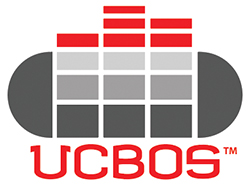Is the Dynamic Unified Logical Data Model the Silver Bullet for Disruptions?
Q. Enterprises that are transforming their supply chain are slow to change. What roadblocks are impeding their efforts?
A. Our supply chains of today were designed decades ago to achieve data uniformity across the supply chain ecosystems and not to deal with unwarranted supply chain disruptions. All SCM apps are designed for specific business functions with modules to perform "predetermined" operations with known variables and implicit assumptions.
Even exceptions are predetermined with a static outcome. The speed of innovation is curbed by legacy black boxes reliant on reports and ETLs; siloed vendor and custom systems bound by rigid integration layers; and sophisticated systems aimed for functional modules wrapped with APIs and microservices.
Q. What are the practical challenges businesses face while rolling out any new supply chain use cases?
A. Salvaging the real-time data from operational systems is the first step of the hurdle, as we need specialized knowledge to understand each vendor’s system flows and architecture. Consolidating the data, then assuring the quality, accuracy of data, and then finally interpretation of the data remains the major challenge.
Incorporating new business flows within the existing operational systems and bridging data back into upstream and downstream systems is another struggle as the original implementation may not have kept that in scope. It is often classified as change request leads to additional budget and time.
Q. Does building a data lake solve some of the real-world SCM challenges?
A. It does but it won’t solve the core issue. Let’s take a standard supply chain operation: If clearing a glitch with a container from the port, the ripple effect is felt through the entire supply chain.
Deploying alternative business actions that don’t compromise cost or customer satisfaction is the intended outcome. Data lake cannot deliver that as it has limitations around data latency, rigid schema, restricted insights, and bi-directional orchestration.
We need an adaptive unified logical data model augmented with semantics that creates a real-time database with a deep business context. It allows businesses to gain real-time supply chain insights from customers, markets, partners, production, distribution, logistics, and environments.
A unified data model converges the data points across the ecosystems beyond IT standardizations, functional modules, systems, and data types and presents the current state of a customer order, manufacturing schedule, truck stop, inventory positions, etc.
Q. What opportunities abound when there is free interchange of data?
A. Without data insights, no business decision is accurate.
Solutions that address the need for a flexible unified logical data model enable businesses with a 360-degree view of their supply chain ecosystem, the ability to run what-if analysis, and be ready for these unknown factors.
Learn more about how you can enable a dynamic, unified logical data model within weeks. www.ucbos.com


